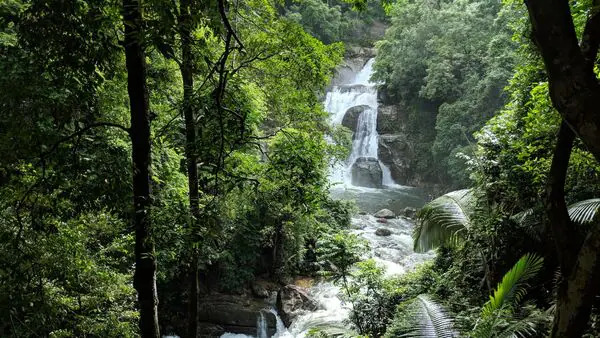India’s forest area increases, elevating the country from 10th to 9th place globally, according to the latest FAO report
The area under forest cover in India stood at 72.7 million hectares, according to the Global Forest Resources Assessment (GFRA) 2025.(Istockphoto)
India has made significant strides in forest conservation, as highlighted in the Food and Agriculture Organization’s (FAO) Global Forest Resources Assessment (GFRA) 2025. The country has risen to the 9th position globally in total forest area, up from 10th in the previous assessment, and has maintained its 3rd position in terms of annual forest area gain. These achievements underscore India’s commitment to sustainable forest management and environmental stewardship.
Global Forest Area Rankings
According to the FAO report, the global forest area stands at 4.14 billion hectares, covering approximately 32% of the planet’s land area. India’s forest area is now 72.7 million hectares, placing it among the top 10 countries globally. The top five countries with the largest forest areas are:
- Russia – 832.6 million hectares
- Brazil – 486 million hectares
- Canada – 368.8 million hectares
- United States – 308.9 million hectares
- China – 220.3 million hectares
India follows countries like Australia, the Democratic Republic of the Congo, and Indonesia in the global rankings. This improvement reflects India’s ongoing efforts in afforestation and reforestation initiatives.
Annual Forest Area Gain
India has also maintained its position as the 3rd highest country globally in terms of annual forest area gain. Between 2015 and 2025, India added approximately 191,000 hectares of forest area annually. This is a significant contribution to the global effort to combat deforestation and promote sustainable land use practices. The top two countries in annual forest area gain are:
- China – 1.69 million hectares per year
- Russian Federation – 942,000 hectares per year
Other countries with notable annual forest area gains include Turkey, Australia, France, Indonesia, South Africa, Canada, and Vietnam.
Regional Contributions to Forest Area Gain
Asia has emerged as the only region to record an increase in forest area between 1990 and 2025, largely due to significant gains in China and India. This trend highlights the importance of regional cooperation and commitment to forest conservation. The FAO report notes that Asia’s forest expansion has played a key role in slowing global deforestation, which remains the highest in South America and Africa.
India’s Forest Conservation Initiatives
India’s rise in global forest rankings can be attributed to several national initiatives aimed at enhancing forest cover and promoting sustainable land management:
- Afforestation Programs: The government has implemented large-scale afforestation programs under the Green India Mission, aiming to increase forest and tree cover across the country.
- Community Participation: Initiatives like the ‘Ek Ped Ma Ke Naam’ campaign have encouraged public participation in tree plantation drives, fostering a sense of responsibility towards environmental conservation.
- Policy Support: Policies such as the National Forest Policy and the Forest Conservation Act provide a legal framework for forest protection and management.
- Agroforestry Promotion: The promotion of agroforestry practices has helped in integrating tree cultivation with agricultural activities, enhancing both biodiversity and farmers’ livelihoods.
These efforts have not only increased forest area but have also improved the quality of forest ecosystems, contributing to biodiversity conservation and climate change mitigation.
Challenges and Areas for Improvement
Despite the positive trends, challenges remain in forest conservation:
- Forest Degradation: Some regions, such as Madhya Pradesh, have experienced forest cover loss due to factors like encroachment and illegal logging.
- Forest Quality: While the total forest area has increased, the quality of forests, particularly in terms of biodiversity and ecological health, requires continuous monitoring and improvement.
- Climate Change Impacts: Climate change poses a threat to forest ecosystems, affecting species distribution and forest health.
Addressing these challenges requires sustained efforts, effective policy implementation, and active community involvement.
Conclusion
India’s advancement to the 9th position globally in forest area and its consistent performance in annual forest area gain are commendable achievements. These milestones reflect the country’s commitment to environmental sustainability and the success of its forest conservation initiatives. However, continued efforts are necessary to address existing challenges and ensure the long-term health and vitality of forest ecosystems. With sustained commitment and collaborative efforts, India can continue to play a pivotal role in global forest conservation.
Also Read : Toxic air is back again in Delhi – here’s why it’s so hard to stop it















 Categories
Categories









